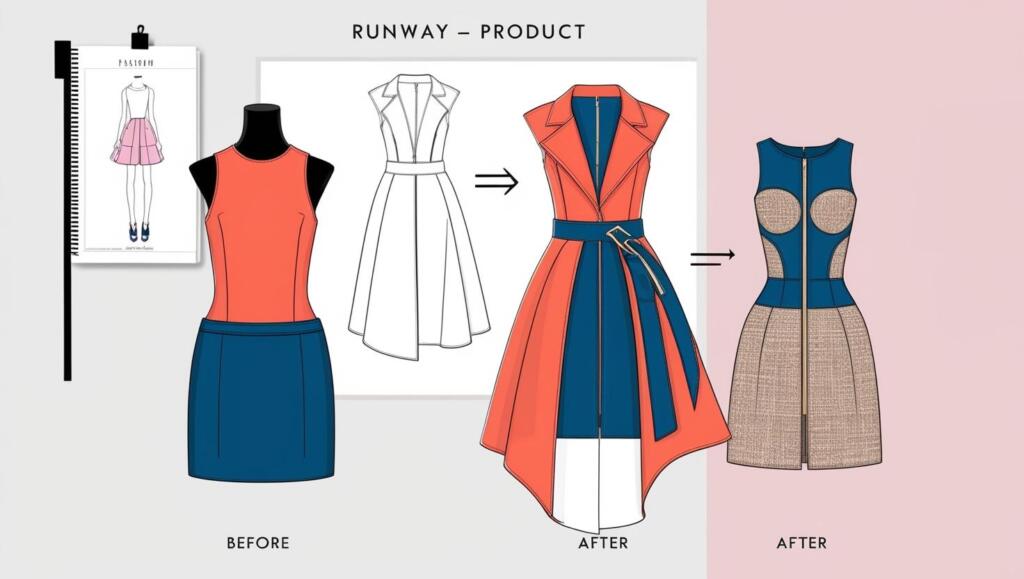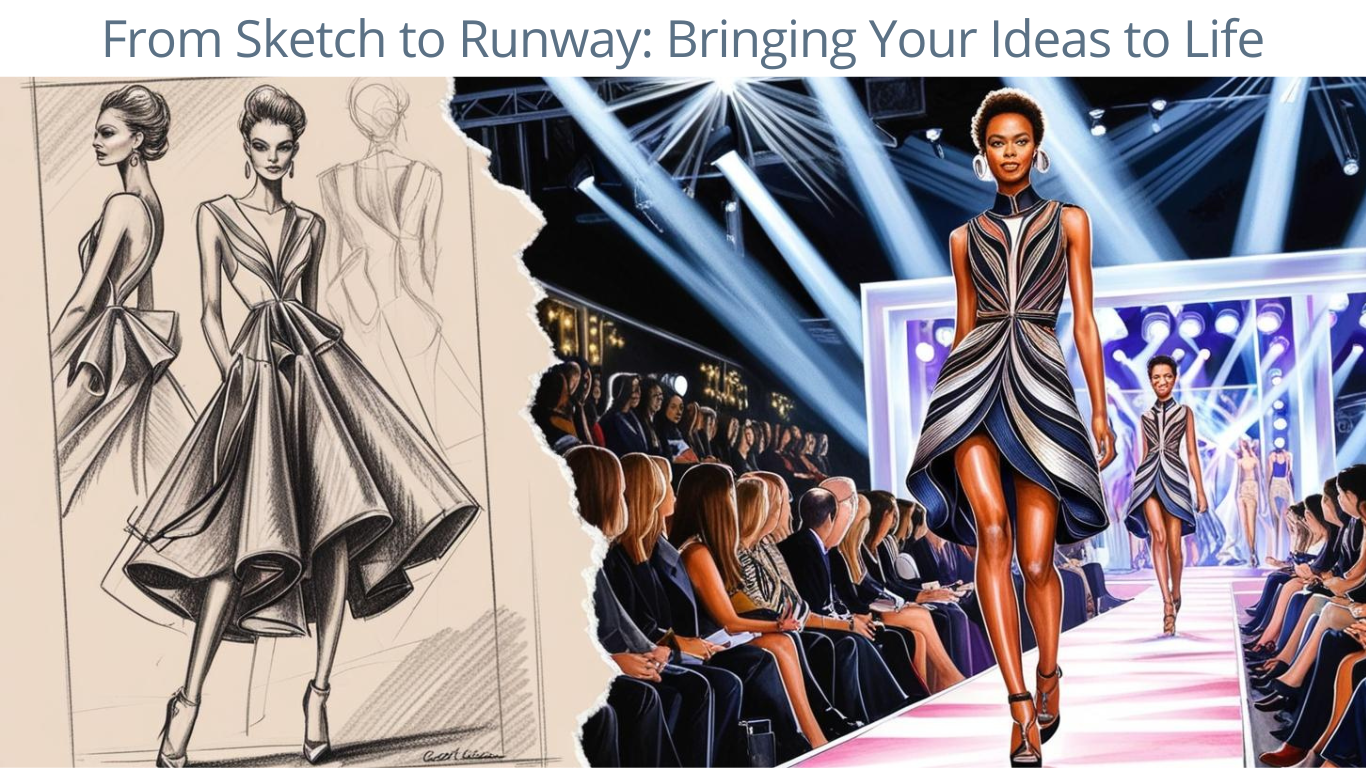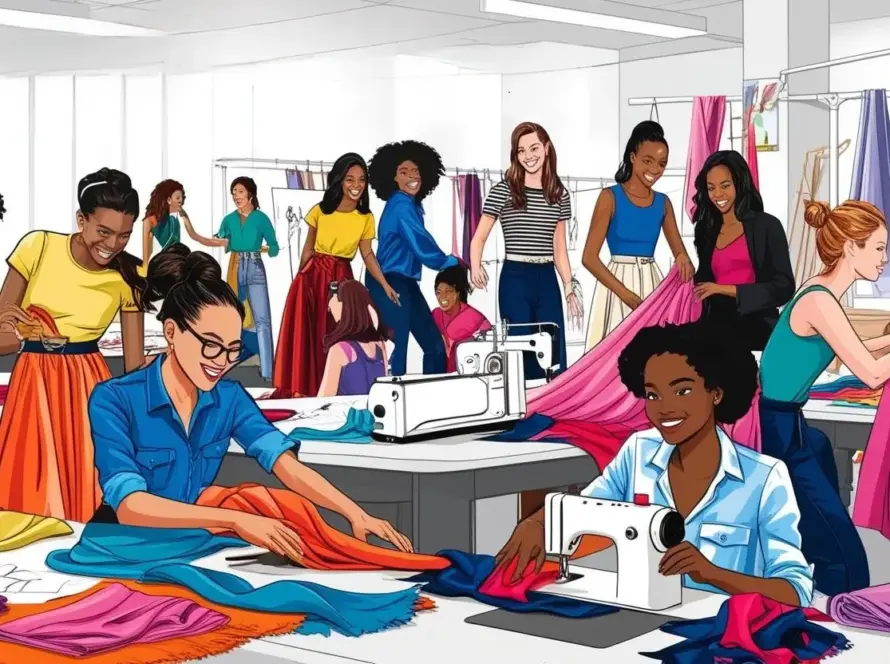Every fashion designer would dream of how their ideas could turn into reality on the runway. A lot of work, creativity, and most importantly, great comprehension of the whole design process from a simple sketch to the fully realized garment is the key to accomplishing this successfully. For students in the 3 Years Program in Fashion Design, this journey is nothing less than thrilling and life-changing to eventually achieve successful results in the fashion world. But how do your ideas go from a simple drawing to a show-stopping runway piece? Let’s break it down.
How Do You Turn Your Sketches into Designs?
Translation of your first sketches into real designs marks the beginning of bringing your ideas into reality. Be it hand drawings or a digital tablet, the sketch is the blueprint for your creations. You will be spending a considerable amount of time in your 3 Years Program in Fashion Design learning to draw and present the drawing with proportions, draping, and detailing to give depth to your sketches.
Start by focusing on the design elements you want to focus on: be it fabric, silhouette, or intricate embellishments. Play with color palette and fabric combinations in your drawing. It’s also at this stage that several directions can, and must be, explored to see where it takes your design. A quick sketch does not have to be perfect; rather, it simply has to serve as a clear expression of idea and vision. The more you advance your studies, the more you learn about fabric motion, how to conceptualize cuts, and how to bring life into your drawings.
When you are done with sketches, comes the refinement. You will then work on creating the patterns, thereby understanding how actual garment prototypes can be achieved. If your emphasis is couture, then in the second year of the 3 Years Program in Fashion Design, you will even begin learning techniques such as draping and pattern making that turn a two-dimensional sketch into a three-dimensional structure.
What’s Next to Design?
Translating your sketches to real garments may be a huge but rewarding change since flat, two-dimensional images need to evolve into three dimensions, and all by itself that might be challenging in the process. Pattern making, in common, is simply making templates to which your garment will be cut from after a preliminary design prepared.
In your 3 Years Program in Fashion Design, you’ll learn how to create these patterns based on your sketches. This process requires precision and attention to detail, as each pattern piece will need to fit together to create the final look. You’ll also need to account for fabric types, fit, and seam allowances.
Once your pattern is ready, it’s time to cut the fabric and begin constructing the garment. By this level, you are really good at sewing. Your curriculum will teach you how to properly sew your seams, install your zippers, and construct edges that the commercial manufacturer or high-end manufacturer needs/wants. An understanding of its properties–how fabrics drape and stretch–will, when you are developing fabrics, help to control exactly how fabrics move and work to your best advantage for desired aesthetics of a garment.

How Do You Perfect Your Garment?
Construction takes time, but you have to know that perfection lies in the details. In the last leg of your 3 Years Program in Fashion Design, your construction skills will evolve, and you should be able to create perfect finishes. When the garment is assembled, it’s time for fine-tuning of fit. Comfort, flattering, and as you have visualized your fit, you will need to make adjustments accordingly.
Probably one of the most valuable skills that you will pick up in college is draping. Draping essentially involves shaping the fabric right on a mannequin or dress form; it’s one of the great ways to achieve structure and flow in a garment. Whether with stiffened fabrics or soft and fluid materials, draping gives you the power to see and conceptualize what a fabric really does. The more confident you are in draping techniques, the more intricate and complicated a design you can create, and your work will become runway-worthy.
How Would You Prepare for the Runway?
After designing, creating, and perfecting your garment for weeks, the last test will be on the runway. More than just presenting your design, preparation for a runway show includes harmony in everything from the garment to accessories and models. This course will provide the aspiring fashion designer with the knowledge needed to style the whole look-from selecting the right shoes and accessories to hair that completes the creation.
During your 3 Years Program in Fashion Design, you attend fashion shows and events that give you hands-on experience in how to showcase your work. You need to understand how to dress the models, how to coordinate with makeup artists and stylists, and how to make your designs shine in a fast-paced runway environment. Every piece should look great on a hanger but also come alive on a model’s body and impress an audience and an entire industry.
Conclusion
It’s where the magic happens, but it is also an opportunity for you to showcase your work in front of an audience and professionals. It’s a big deal for young designers to see their clothes on the runway because that’s one momentous time in their careers. It is a place where all your hard work and creativity are vindicated and may prove to be a gateway for career opportunities-be it getting scouted by a fashion house or exposure to potential clients.
Your runway show represents your growth as well. During the 3 Years Program in Fashion Design, you will also learn how to design an experience, not only a piece of design. From sketching of an idea up to finishing and watching the very piece walk down the runway- each step will contribute in defining you as a designer, beginning with that very first sketch.




